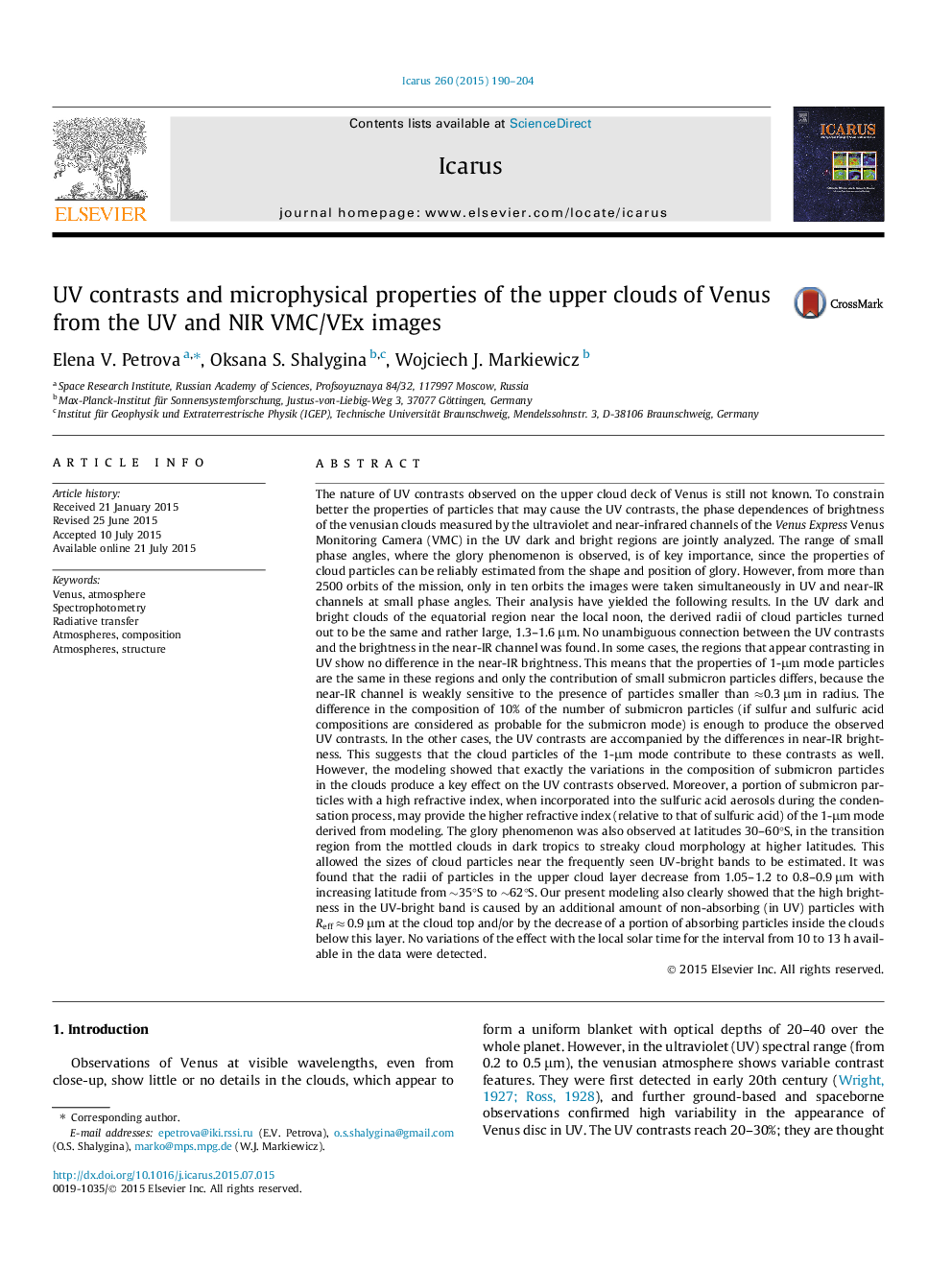| Article ID | Journal | Published Year | Pages | File Type |
|---|---|---|---|---|
| 8136030 | Icarus | 2015 | 15 Pages |
Abstract
The nature of UV contrasts observed on the upper cloud deck of Venus is still not known. To constrain better the properties of particles that may cause the UV contrasts, the phase dependences of brightness of the venusian clouds measured by the ultraviolet and near-infrared channels of the Venus Express Venus Monitoring Camera (VMC) in the UV dark and bright regions are jointly analyzed. The range of small phase angles, where the glory phenomenon is observed, is of key importance, since the properties of cloud particles can be reliably estimated from the shape and position of glory. However, from more than 2500 orbits of the mission, only in ten orbits the images were taken simultaneously in UV and near-IR channels at small phase angles. Their analysis have yielded the following results. In the UV dark and bright clouds of the equatorial region near the local noon, the derived radii of cloud particles turned out to be the same and rather large, 1.3-1.6 μm. No unambiguous connection between the UV contrasts and the brightness in the near-IR channel was found. In some cases, the regions that appear contrasting in UV show no difference in the near-IR brightness. This means that the properties of 1-μm mode particles are the same in these regions and only the contribution of small submicron particles differs, because the near-IR channel is weakly sensitive to the presence of particles smaller than â0.3 μm in radius. The difference in the composition of 10% of the number of submicron particles (if sulfur and sulfuric acid compositions are considered as probable for the submicron mode) is enough to produce the observed UV contrasts. In the other cases, the UV contrasts are accompanied by the differences in near-IR brightness. This suggests that the cloud particles of the 1-μm mode contribute to these contrasts as well. However, the modeling showed that exactly the variations in the composition of submicron particles in the clouds produce a key effect on the UV contrasts observed. Moreover, a portion of submicron particles with a high refractive index, when incorporated into the sulfuric acid aerosols during the condensation process, may provide the higher refractive index (relative to that of sulfuric acid) of the 1-μm mode derived from modeling. The glory phenomenon was also observed at latitudes 30-60°S, in the transition region from the mottled clouds in dark tropics to streaky cloud morphology at higher latitudes. This allowed the sizes of cloud particles near the frequently seen UV-bright bands to be estimated. It was found that the radii of particles in the upper cloud layer decrease from 1.05-1.2 to 0.8-0.9 μm with increasing latitude from â¼35°S to â¼62°S. Our present modeling also clearly showed that the high brightness in the UV-bright band is caused by an additional amount of non-absorbing (in UV) particles with Reff â 0.9 μm at the cloud top and/or by the decrease of a portion of absorbing particles inside the clouds below this layer. No variations of the effect with the local solar time for the interval from 10 to 13 h available in the data were detected.
Keywords
Related Topics
Physical Sciences and Engineering
Earth and Planetary Sciences
Space and Planetary Science
Authors
Elena V. Petrova, Oksana S. Shalygina, Wojciech J. Markiewicz,
